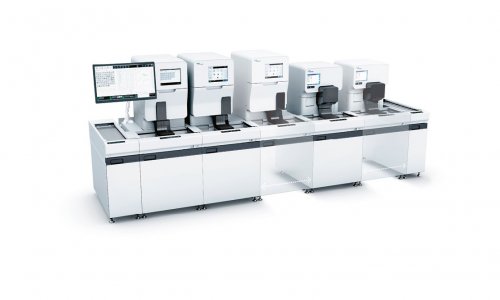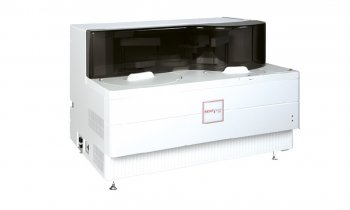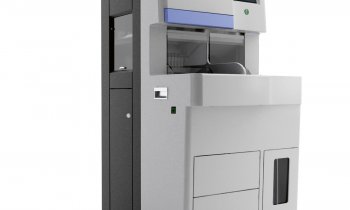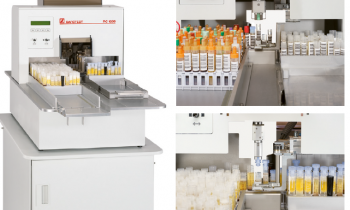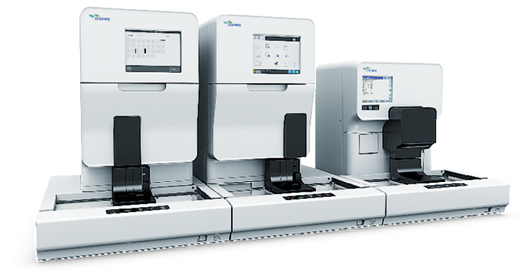
Article • Achieving a faster workflow
A modular approach to urinalysis
The reasons why doctors request urinary analysis are varied – perhaps to detect a possible or suspected infection, or to screen for kidney diseases. In all cases a reliable and rapid result is the major aim. Urinary microscopy and culture have been the mainstays of urinary analysis for many, many years both of which require time and specialist handling.
Report: Jane MacDougall
When microscopy is performed, in addition to the numbers and types of bacteria present the number of squamous epithelial cells and leucocytes also need to be assessed, to serve as indicators of contamination and infection respectively. The fully automated UN-Series from Sysmex offers a modular approach to urinalysis including analysers, digital imaging, samplers and software. Now available in Europe, these where introduced at JIB this week.
The different systems all aim to provide quality results for clear diagnosis while significantly increasing workflow and reducing human error for an overall result of improved clinical laboratory efficiency in the work-up for kidney and urological diseases and urinary tract infections. The detection system is based around fluorescence flow cytometry. The highly sensitive detection level allows the machines to identify, with high precision, different particles within the urine sample. The incorporation of a new blue laser enhances bacterial screening capabilities, allowing rapid classification, while a new depolarised side light scatter easily discriminates between red blood cells and crystals.
Coupling to a fully-automated imaging system enables turnaround times to be significantly reduced. Built into the analysis software are smart algorithms and different diagnostic parameters, enabling casts and epithelial cell differentiation, which will help lead to the efficient and accurate diagnosis of kidney disorders.
The new system has expanded on the older series’ original five parameters; red blood cells, white blood cells, bacteria, casts and epithelial cells to include nine others; squamous cells, non-squamous cells, hyaline casts, non-hyaline casts, fungi, spermatozoa, crystals, mucus and white blood cell clumps. This has been made possible due to the inclusion of new reagents to stain nucleic acids and surface membranes; both result in better differentiation of bacteria, fungi, white blood cells, epithelial and other cells. The company claims the enhanced detection system means fewer false positives and negatives and therefore a reduced re-testing rate.
‘In turn, this workflow is optimised thanks to dedicated work area management software that helps with smart rules and quality control reagent management.’ the company reports.
‘The easy-to-use system also can be used to analyse other body fluids, such as cerebrospinal, pleural, ascitic, joint, etc..
Sysmex adds that it hopes, with this completely scalable offering, that the company has tackled one of the key challenges faced by laboratories: balancing diagnostic/analytical needs with the available hardware and software.
Further information is available at www.sysmex-europe.com/urinalysis and at the micro-website www.art-of-particles.com
07.08.2017



